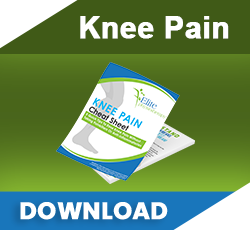Calling It Quits
For most of us, the thought of retirement fills us with notions of finishing work when we’ve satisfied our work ethic (or made enough money) and moving to Coronado Island to spend our days drinking Long Island iced teas, overlooking the San Diego skyline (just me then?). The only time forced retirement can be a good thing, is if you win the lotto!
Unfortunately, injury is part and parcel of sport. There is never a good time to get injured. And the higher the level, the greater the cost. You see it’s not just the physical implications of injury that can be painful. Andy was asked
“why would you consider hanging up your boots now?”
to which his reply was
“Because I’m in a lot of pain. And I can’t last the distance”.
I suspect he wasn’t just referring to his hip pain.
We see many significant injuries in clinic. Injuries that require long periods of time missed from sport. Now, the actual physical rehabilitation is our bread and butter. Truth be told, it’s probably our favourite part of the job (especially when all goes to plan!). But what goes hand in hand with the physical facet of any injury is the mental recovery. Something that is often underestimated.
With any injury, an athlete will go through the five stages of grief. It is a loss after all – the loss of your social life, loss of your time out to interact with your mates, loss of your identity and for some, the loss of their job.
Usually before an athlete comes to us in clinic, they will have experienced the first stage of grief: Denial. They will have limped through that 10k, ignored the warning signs of injury. This is a dangerous game. What might start out as a small twinge can turn into something significant if it’s not addressed. And nature has a wonderful way of imposing its laws on us…if you don’t take time out to sort an injury, the body will usually end up forcing you out.
This denial is then followed by anger. Athletes may be feeling aggrieved and resentful of their own body – “why me?” Or that anger may be directed towards a coach, manager, family, particularly if the don’t understand the impact of your loss.
By the time an athlete usually presents to us in clinic, particularly if it has been a slow burner of an injury, something they have managed to struggle through for quite some time already, they will tend to be in the third stage of grief: bargaining.
“I’ll do more rehab, more often, more reps, more weights, more stretches and then I’ll get back sooner”
“If I take a week off now, can I play after that?”
“Can I just get an injection?”
We may not be the first physios they have seen. Or the last. Athletes may seek a third, fourth and fifth opinion. Or maybe they just want to find that someone who will agree to their bargaining.
The next stage is Depression. We warn everyone…you will hit the wall! It usually happens a few months into your rehab when the ‘novelty’ has worn off. When people aren’t calling anymore. When you’re off the crutches, your wounds have healed and you have no visible sign of injury. When your teammates are playing on and someone else has slotted into your position. Does the manager even remember you?
The initial enthusiasm for rehab and recovery has waned. The motivation to go to the gym when everyone else is out on a pitch is dwindling. Rehab is a lonely place but this is the time to keep your head down and suck it up. Do the rehab. Trust the process.
And finally, Acceptance. Getting to this stage is fundamental to recovery. This is where adherence to rehab tends to be at its utmost. The athlete has clear goals in mind and a set pathway of how to achieve them. This is where the good work is done and the light at the end of the tunnel is brightest. An end in sight!
Like the physical expedition of recovery, these stages don’t always follow a linear fashion. Sometimes it can feel like one step forward, two steps back. And sometimes, despite all the athletes’ best efforts, full recovery isn’t always possible. They might get back onto the court, pitch or track. But is it the same as before? Are they the player they were before? There in lies the conundrum for anyone coming back from injury…are they returning to play or returning to performance?
A study just published in the American Journal of Sports Medicine found that “for patients about to undergo their first ACLR, 88% were expecting to return to their preinjury level and those about to undergo revision surgery or second primary ACLR 63% and 80% respectively expected to return.
However, at 12 months after surgery, only 24% of patients who expected to return to their preinjury level of sport had actually returned, and 15% of all patients had already decided to give up sport.”
I’m sure Andy Murray has been through all of the aforementioned stages several times. Playing through pain, in denial. Bargaining for the chance of one last hurrah at Wimbledon. Anger as this retirement clearly isn’t welcomed. Maybe he has finally reached acceptance…though not with the happy outcome he would want. It has been reported that he is likely to require further surgery on his hip but with the goal of allowing him to have a quiescent hip day to day, so he can play with his kids and a few holes of golf.
Retiring from sport is never easy, whatever your level, however it comes about. You are putting to bed a fundamental part of your identity. For the majority of sports people we deal with in clinic, sport is their passion, motivator and priority. But when all is said and done, it doesn’t pay the bills. How far, how long and how much can you push it before enough is enough?
Maybe the big picture of a pain free hip, playing with the kids and those few holes of golf isn’t so bad!


